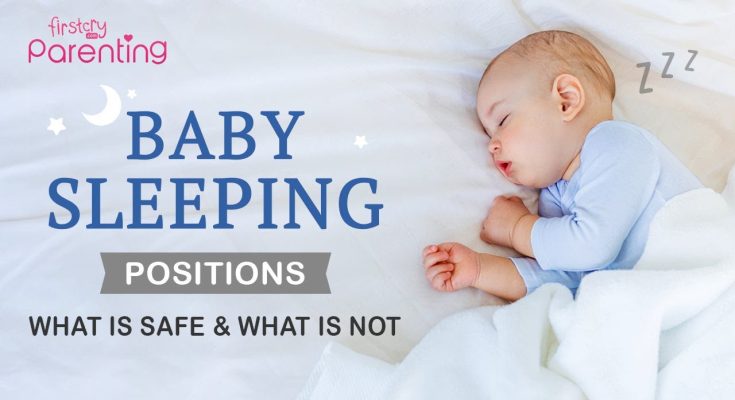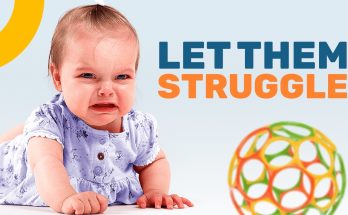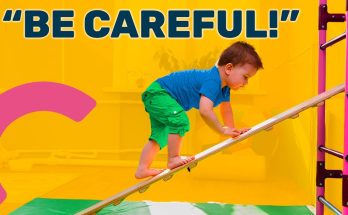Ensuring a safe sleep environment for babies is one of the most important responsibilities of new parents. Sleep-related incidents, including sudden infant death syndrome (SIDS), are a significant concern, making it crucial to follow expert recommendations on baby sleeping positions. Understanding the safest sleeping position and the risks associated with incorrect positions can help protect your baby and promote healthy sleep habits.
The Safest Baby Sleeping Position
The safest sleeping position for infants, as recommended by pediatricians and the American Academy of Pediatrics (AAP), is the back-sleeping position. Placing a baby on their back to sleep significantly reduces the risk of SIDS and other sleep-related dangers. Since the introduction of the “Back to Sleep” campaign (now called “Safe to Sleep”), which encourages parents to place babies on their backs, the rate of SIDS has dropped dramatically.
Why is back sleeping the safest?
- Reduces the risk of SIDS – Studies show that babies who sleep on their backs have a lower risk of experiencing sudden and unexplained death in their sleep.
- Keeps airways open – Back sleeping allows for proper air circulation and reduces the likelihood of suffocation.
- Prevents overheating – Babies who sleep on their backs are less likely to overheat, a factor that has been linked to SIDS.
Unsafe Sleeping Positions for Babies
Some positions can be dangerous for infants and should be avoided:
-
Stomach Sleeping (Prone Position)
- Sleeping on the stomach increases the risk of SIDS, as it can lead to suffocation.
- Babies may rebreathe exhaled carbon dioxide, leading to oxygen deprivation.
- It can cause overheating, which is a known risk factor for SIDS.
-
Side Sleeping
- Babies placed on their sides can easily roll onto their stomachs, leading to a higher risk of suffocation.
- This position can cause the baby’s face to press against the mattress, making it harder to breathe.
-
Sleeping in Car Seats, Swings, or Infant Seats
- While these devices are great for short naps under supervision, they are not safe for overnight sleep.
- Babies can slump forward, restricting their airway and increasing the risk of suffocation.
- Sleeping in an upright position for long periods can also contribute to positional asphyxia.
How to Create a Safe Sleeping Environment
Besides ensuring the baby sleeps in the correct position, creating a safe sleeping environment is crucial:
-
Use a Firm Mattress
- The crib mattress should be firm and covered with a fitted sheet.
- Avoid using soft bedding, pillows, or plush toys in the crib, as they can pose suffocation risks.
-
Keep the Crib Free of Hazards
- Do not place blankets, bumpers, or stuffed animals in the crib.
- Use a wearable blanket or sleep sack instead of loose blankets to keep the baby warm.
-
Share a Room, But Not a Bed
- The safest place for a baby to sleep is in a crib or bassinet in the parents’ bedroom.
- Bed-sharing increases the risk of suffocation and accidental injury.
-
Maintain a Comfortable Temperature
- The ideal room temperature for a baby’s sleep is between 68-72°F (20-22°C).
- Overheating is a risk factor for SIDS, so dress the baby in light, breathable clothing.
-
Avoid Sleep Positioners and Wedges
- These products claim to keep babies in a specific sleeping position but can increase the risk of suffocation.
- The AAP advises against using sleep positioners as they have been linked to infant deaths.
When Can a Baby Sleep on Their Stomach?
Once a baby is old enough to roll over independently, which usually happens between 4 to 6 months, they may naturally move to a stomach-sleeping position. At this stage, it is considered safe to let the baby sleep on their stomach if they roll into that position on their own. However, parents should continue placing the baby on their back at the start of each sleep period.
Common Concerns About Back Sleeping
Some parents worry that back sleeping may cause:
-
Flat Head Syndrome (Positional Plagiocephaly)
- This can happen if a baby spends too much time lying on their back.
- To prevent this, encourage tummy time during the day when the baby is awake and supervised.
- Alternate the baby’s head position while sleeping to reduce pressure on one spot.
-
Choking on Spit-Up
- Many parents fear that babies will choke if they spit up while sleeping on their backs.
- However, studies show that back sleeping actually reduces the risk of choking, as a baby’s anatomy allows for better airway protection in this position.
Final Thoughts
Ensuring your baby sleeps in a safe position is one of the most important steps in protecting them from sleep-related risks. Always place your baby on their back to sleep, provide a firm and hazard-free sleep environment, and follow safe sleep guidelines to reduce the risk of SIDS. By making these small but critical choices, you can help your baby sleep safely and soundly.



